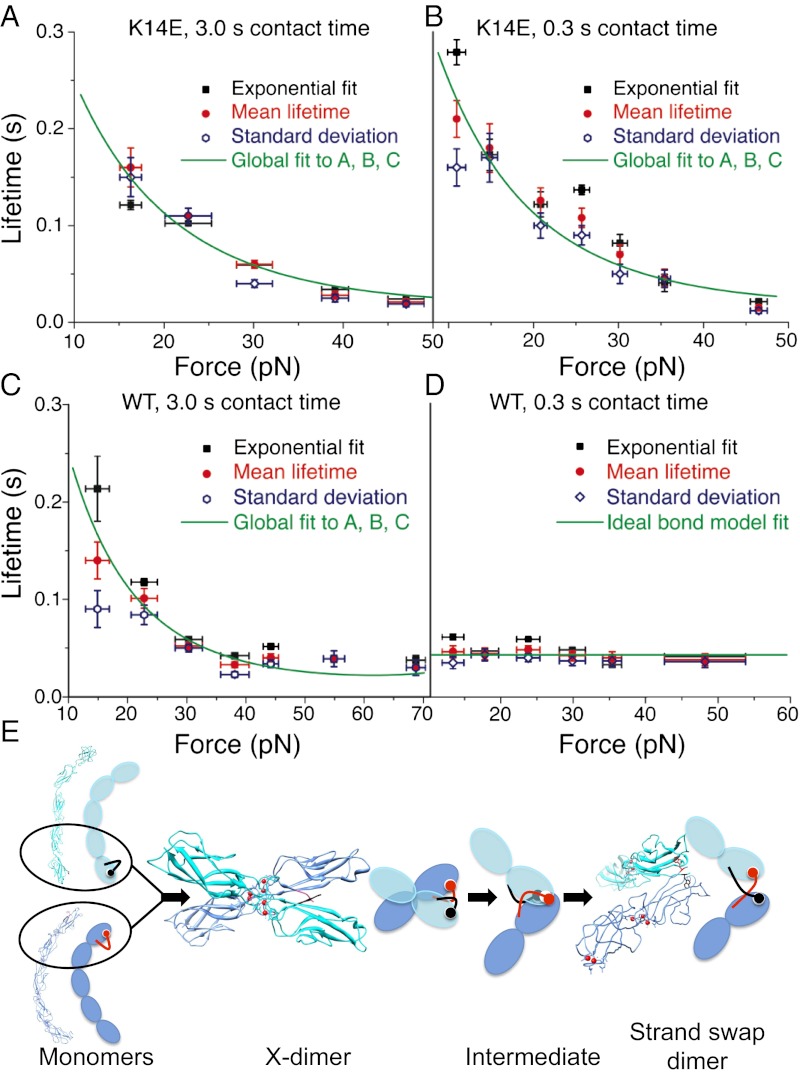Fig. 2.
Strand-swap dimers form slip bonds. Ideal bonds are measured when X-dimers transition to a strand-swap conformation. (A) Force-dependent lifetimes of the high probability state of K14E mutants that are allowed to interact for 3.0 s show a slip bond behavior; their lifetimes decreases with force. Structural studies show that X-dimer formation is disrupted in these mutants, and they form strand-swap dimers. (B) The high probability state of K14E mutants that are allowed to interact for 0.3 s also form slip bonds. (C) The high probability state of WT cadherins that interact for 3.0 s show a similar slip bond behavior, indicating that they too form strand-swap dimers. Bond lifetimes at the different clamping forces were determined from the mean lifetime (red circle), from the standard deviation of lifetime (blue diamond), and from exponential fits of the bond survival probabilities (black squares). The mean lifetime data in A–C was globally fit to a microscopic, slip bond model (green solid line). (D) The high probability state of WT cadherins that interact for a shorter period (0.3 s), form ideal bonds; their lifetimes are independent of force. Bond lifetimes at the different clamping forces were determined from the mean lifetime (red circle), from the standard deviation of lifetime (blue diamond), and from exponential fits of the bond survival probabilities (black squares). The mean lifetime was fit to an ideal bond model (solid green line). Error bars for bond lifetimes correspond to standard errors, whereas error bars for force correspond to standard deviation. (E) Schematic of the proposed pathway for conversion of X-dimers to strand-swap dimers. Because the on-rate for X-dimer formation is greater than the rate of strand swapping, cadherins first form X-dimers that subsequently convert to strand-swap dimers via an intermediate that forms ideal bonds.

